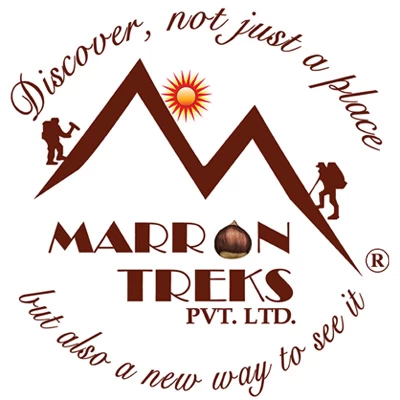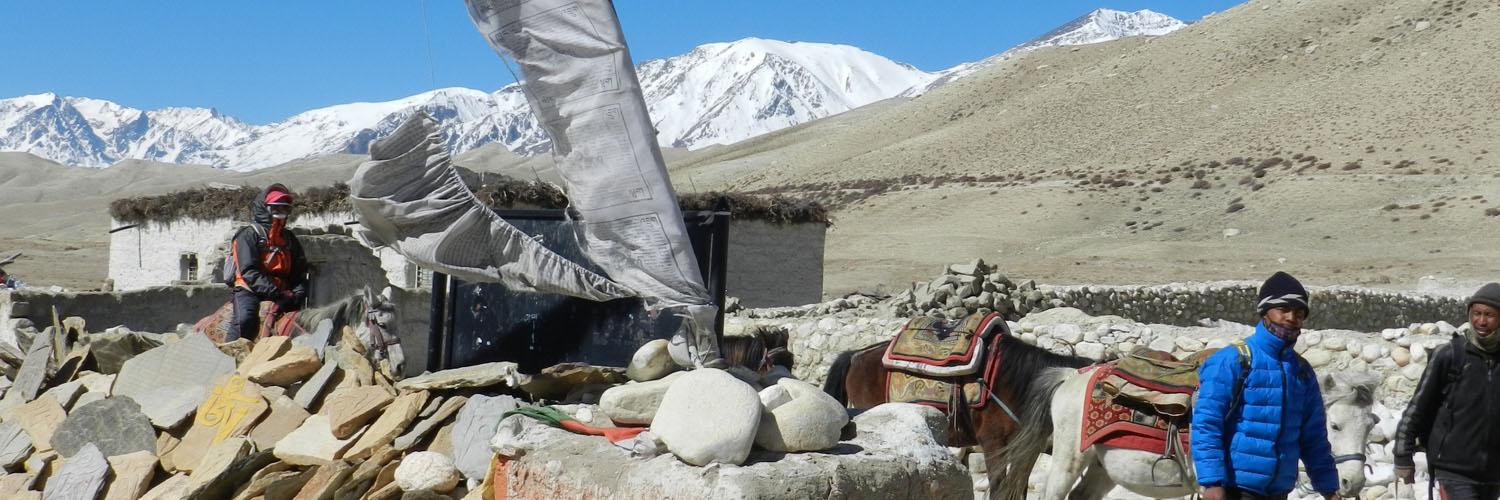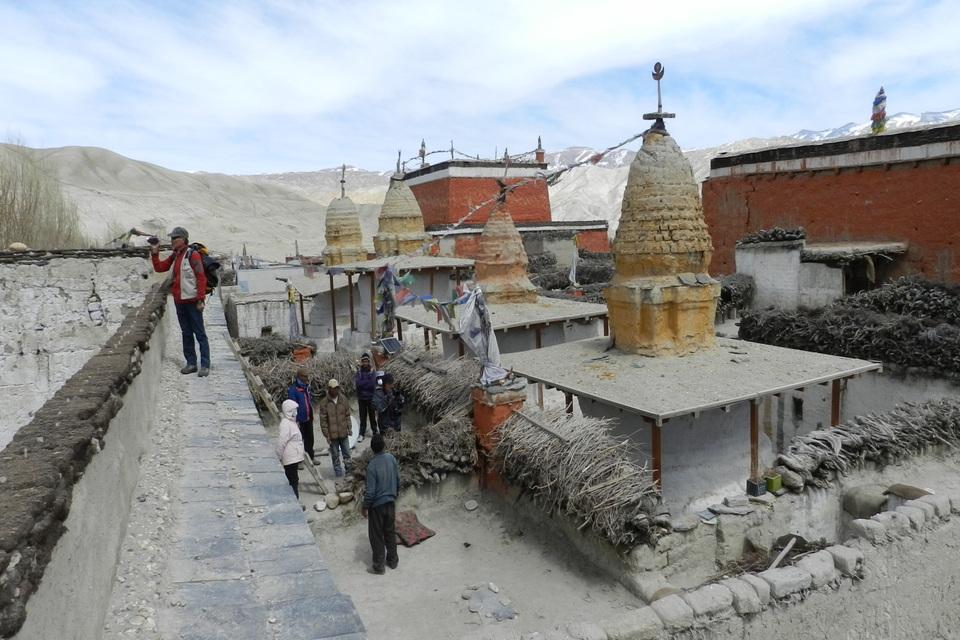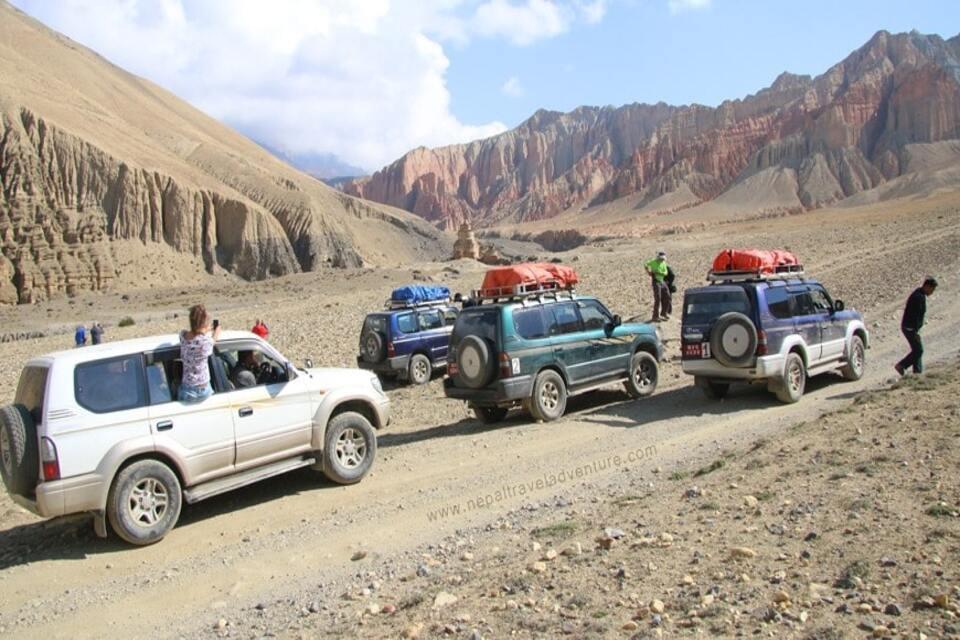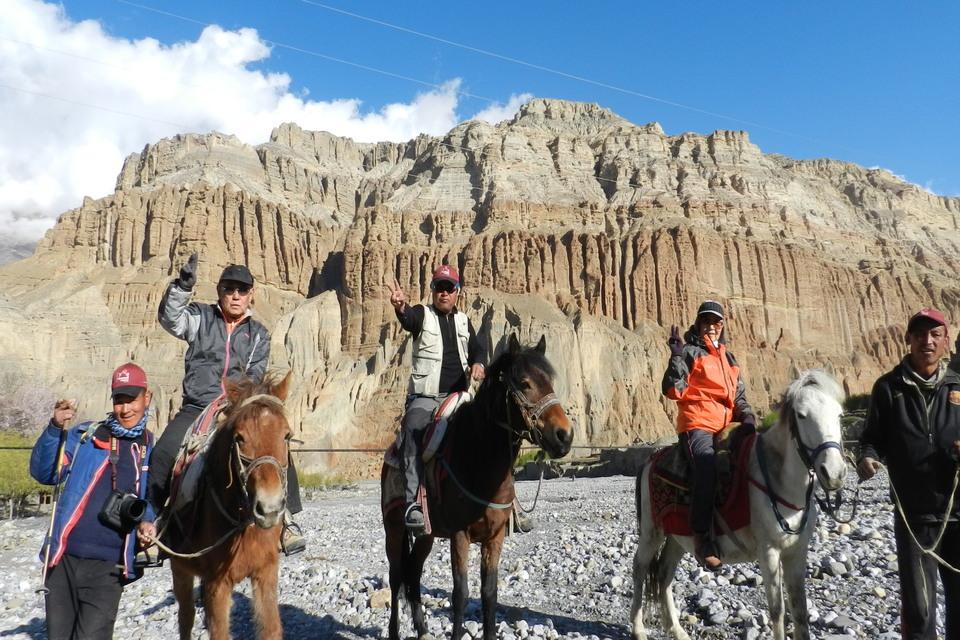Trekking to Mustang region is a great Himalayan journey to the age-old walled city and capital of Mustang, Lo-Manthang located at 3,810 meters. The region is in the northern part of Nepal sharing it’s border with Tibet-China. It’s a rain-shadow area and part of the Annapurna Conservation Area. The landscape of Mustang is rugged and deserted land covering it’s vast area.
Due to it’s remoteness and to protect it’s unique culture and traditions influenced by Tibetan Buddhist culture, the Nepalese Government has declared the area as the restricted trekking area where a special permit is required to enter.
The capital Lo-Manthang is a walled city where age-old monasteries exist including the ancient sky caves closer to the city where a day excursion takes you to these man-made caves on the side of a vertical cliff.
Tiji festival is the most popular three-day cultural festival of Mustang where locals and tourists visit each year to witness the colorful festival in the Himalayas with masked dancers, and monks chanting prayers.
To explore Mustang, Upper Mustang trek is the ideal choice which is an 11-day trek to Lo-Manthang starting/ending from Pokhara. Alternatively, one can also take an overland jeep drive to Lo-Manthang making the journey easier and quicker. Horses are also available if one is not up for walking the long trails.
Trekking in the Mustang region
Trekking in the Mustang region is a journey to witness the stunning landscapes consisting of barren and deserted country, visit the remote villages and witness ancient culture and traditions influenced by Tibetan Buddhism.
Where is it?
The Mustang region is located in the north-central part of Nepal sharing it's border with Tibet (China) in the north. The region lies within the Himalayas tucked between the Annapurna and Dhaulagiri mountain ranges. It is situated to the northwest of Pokhara and to the north of the Annapurna Conservation Area. Lo-Manthang is the capital of Mustang that served as the administrative center of the former Kingdom of Lo. This ancient walled city is the major cultural and historical attraction of the region.
How to get there?
To get to Mustang, first, you must go to Pokhara. Different options exist from Pokhara to get to Mustang. You can fly to Jomsom from Pokhara and trek to Mustang region up to Lo Manthang. Alternatively, you can also drive from Pokhara to the Mustang region and to the walled city of Lo-Manthang. The ultimate goal of the Mustang trek is to reach the city of Lo-Manthang and return back to Pokhara. Beyond Lo-Manthang lies the Tibetan territories.
When to go?
Mustang can be visited from March to November. The most ideal time is autumn (September to November) during when it will be mild and pleasant weather. The trails will be dry with clear skies and comfortable temperatures. Mustang lies on the rain-shadow area due to the huge Annapurna and Dhaulagiri mountain ranges so it means the region receives less rainfall during monsoon season (Jun- Aug) and trekking is possible during monsoon as well.
Mustang Trek Permit
The region of Mustang is considered a restricted area where a special trek permit is required to trek in the region. The government has declared Mustang a restricted zone to protect it’s unique rich culture and traditions. Entering and trekking to Mustang was opened for outsiders only in 1992. The special permit for Mustang is USD 500 per person including Annapurna Conservation Area Permit (ACAP) of NPR 3000 per person.
Altitude Sickness
Trek to Upper Mustang goes below 4,000 meters, so altitude sickness is uncommon. But it’s best to be prepared for it with necessary precautions like avoiding dehydration including walking steadily and acclimatizing yourself. The symptoms of altitude sickness depend upon individuals and you have to be aware of how your body is responding with altitude gain.
Accommodations
Accommodations in Upper Mustang are the basic but comfortable lodges known as tea houses. They are good night stopovers after a day’s walk. The lower elevation like Jomsom provides better accommodation possibilities with more facilities. Luxury accommodation is also available in Jomsom but as you move further to small villages, lodging becomes more basic with fewer facilities.
